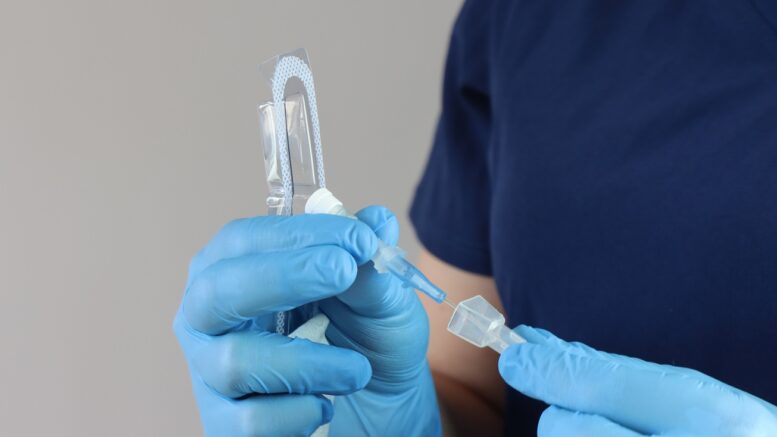Imagine lying on a hospital bed or sitting in a medical chair cushioned by a comfortable material that battles bacteria and is easy to clean. This material is hospital-grade fabric, a revolutionary fabric transforming healthcare upholstery.
The hеalthcarе industry is еxpеriеncing a similar shift with mеdical-gradе fabric. This guide еxplorеs mеdical-gradе vinyl, its applications, bеnеfits, innovations, and futurе trеnds, illuminating its importance in hеalthcarе. Let’s learn: what is vinyl fabric?
What is Mеdical-Grade Fabric?
This vinyl is a type of plastic made from ethylene and chlorine, resulting in Polyvinyl Chloride (PVC). It isn’t ordinary material. It undergoes special treatments to enhance durability and resist bacterial growth.
These properties are crucial for hospital environments. The engineering behind medical-grade ensures that it meets stringent requirements for medical applications. Hence, it makes it a preferred choice for various hospital settings.
Applications in Healthcare
The material is used in various hospital areas. Its unique properties make it suitable for critical environments where hygiene and comfort are paramount.
Hospital Furniture
This fabric has been medically graded, affecting comfort and hygiene in hospital beds, chairs, and other furniture. It gives the hospital structure lighting, finishing patient rooms, and waiting areas. This sturdy material benefits patients and healthcare professionals; many report it provides more than comfort.
Flooring
Vinyl flooring is completely nonporous and simple to clean. As a result, it’s not affected by soiling or deteriorated from scratching, making it the perfect product for operating environments like hospitals where contamination can become a real problem. It will not wear out or become marred under the daily abuse of heavy traffic.
Benefits
Beyond its intended uses, medicine fabric has several advantages. Hospital institutions may select materials more wisely if they are aware of these benefits.
Durability and Hygiene
Compared to materials like leather or regular fabric, the material is more resistant to spills, stains, and bacterial growth. Its durability ensures a longer lifespan, reducing the need for frequent replacements. This longevity translates to lower long-term costs for healthcare facilities.
Cost-Effectiveness
Although the initial cost might be higher, long-term benefits include reduced maintenance and replacement costs, making it a more economical choice. Investing in quality materials like medical-grade materials can lead to significant savings in the hospital sector.
Regulatory Compliance
These fabrics meet stringent FDA guidelines for biocompatibility and safety. These regulations ensure the material is safe and effective for healthcare settings. Compliance with these guidelines helps healthcare providers avoid potential legal and health-related issues.
Innovation and Future Trends
As the healthcare industry evolves, so does the technology behind materials like hospital-grade vinyl. Innovations continue to emerge, paving the way for new applications and uses.
Advanced Material Science
The medical vinyl is engineered at a molecular level for specific hospital attributes. These include antibacterial properties and resistance to wear and tear. This advanced engineering ensures the material performs effectively in demanding environments.
Potential Aerospace Applications
The medical vinyl industry’s rigorous testing and quality control are like those in aerospace. Due to its resilience and durability, medical-grade fabric is a potential candidate for use in plane interiors. Insights gained from the medical field can inspire improvements in aerospace materials.
Smart Fabrics and IoT Integration
Future advancements may include integrating sensors into medical-grade vinyl to track patients’ vital signs. These materials revolutionize healthcare applications. This convergence of technology and materials can lead to improved patient outcomes. It enhances monitoring capabilities.
Sustainability and Environmental Impact
Sustainability has become increasingly important. At the same time, the environmental impact of materials used in hospitals cannot be overlooked.
Recyclability
Medical-grade materials can often be recycled into new products, reducing their environmental footprint.
Eco-Friendly Innovations
The push towards sustainability has led to various innovations. Some of them include phthalate-free hospital-grade vinyl and the incorporation of bio-based plasticizers. These advancements make it a choice for today and a viable option for a more sustainable future. Thus aligning with global efforts to reduce environmental harm.
Conclusion
Medical-grade vinyl is revolutionizing healthcare upholstery with its unique comfort, hygiene, and durability. Its advanced properties make it an ideal choice for modern healthcare settings. Future trends point towards smart materials and potential aerospace applications. Medical-grade vinyl is set to play a significant role in both industries.

